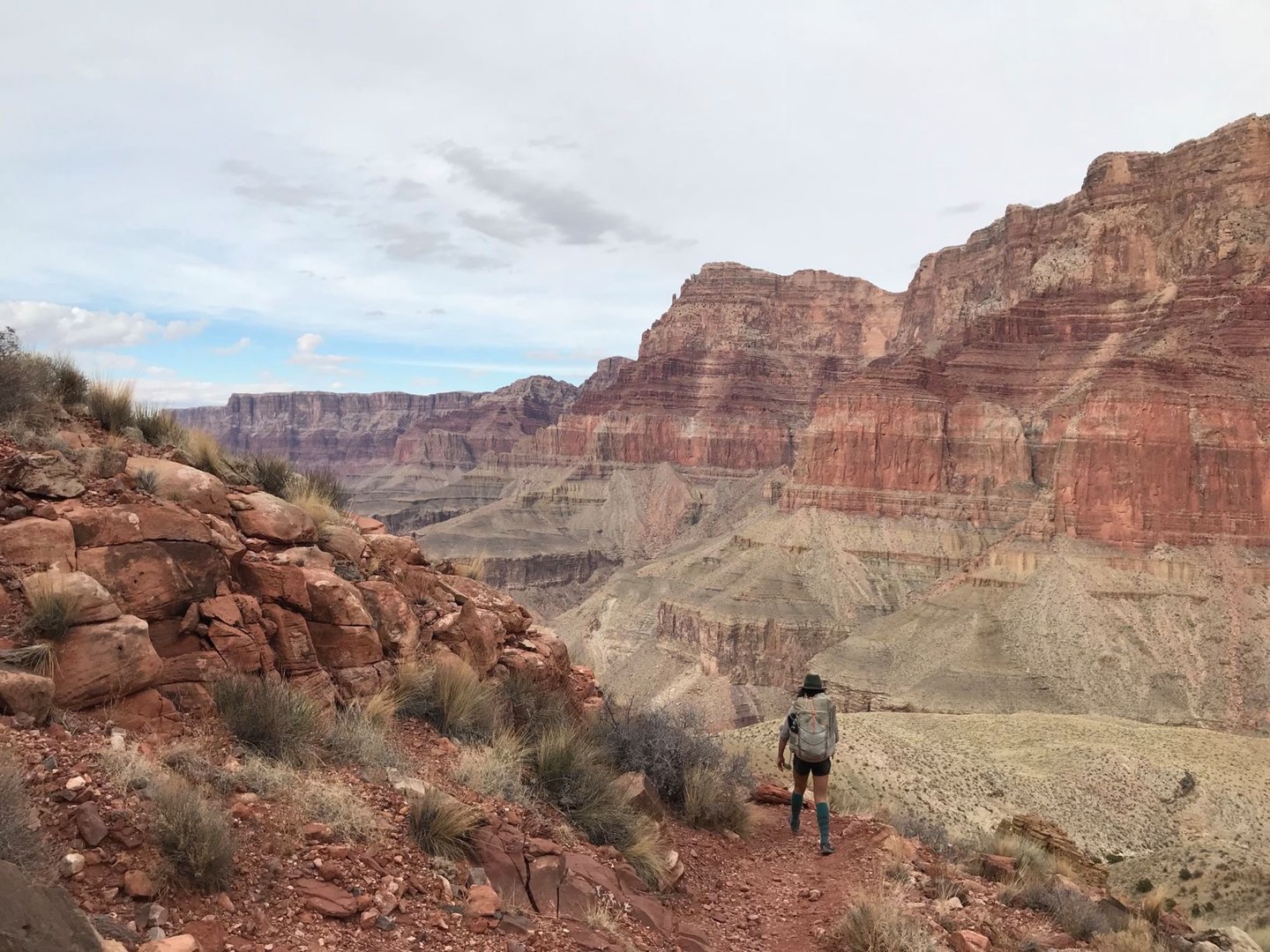You are here
The hike from Lipan Point to Grandview Trailhead is one of the most challenging and rewarding experiences in Grand Canyon National Park, spanning approximately 28.7 miles. This strenuous route descends steeply from the rim to the canyon floor, utilizing the Tanner Trail for descent and the Grandview Trail for ascent. Its steep grades, rough terrain, and navigation challenges make it suitable only for well-prepared and physically fit hikers. Recommended for highly experienced hikers seeking solitude and adventure amidst the grandeur of the Grand Canyon, this remote and primitive path requires detailed planning and familiarity with desert hiking environments.
Beginning at Lipan Point, the trail immediately plunges into the canyon, offering breathtaking views and a steep descent over rocky and unmaintained paths. The National Park Service advises visitors to “Strongly consider talking with a park ranger before attempting this hike” due to the Tanner Trail's challenging nature.
As you traverse the trail, the environment transitions from desert scrub at the rim to a more varied ecosystem below, showcasing pinyon pine, juniper, and occasional lush riparian vegetation near water sources.
The ascent back to the South Rim via the Grandview Trail, while slightly less challenging than the Tanner, remains a rugged and steep route. All warnings aside, this is an incredible adventure! The trail's challenging nature and spectacular vistas make it a memorable journey for those equipped to tackle it.
SAFETY AND CONSIDERATIONS
-
There are no water sources in between Lipan Point and the Colorado River.
-
Hikers should expect slow progress on the Tanner Trail as the terrain is steep, infrequently maintained, and requires navigation over unstable footpaths and boulder fields.
-
The Tanner Trail is notably hot.
-
This adventure entails a significant elevation change, dropping from 7,350 feet at Lipan Point to 2,700 feet at the Colorado River.
FLORA AND FAUNA
The trail's diverse habitats support a wide range of plant and animal life. Hikers may encounter mule deer, bighorn sheep, and a variety of bird species, including the California condor. The flora includes cacti, wildflowers, and hardy shrubs adapted to the harsh desert environment.
WHEN TO VISIT
The trail is accessible year-round, but summer hikes are not recommended due to extreme heat and the risk of dehydration. Spring and fall offer the most pleasant conditions, while winter may present challenges with snow and ice at higher elevations.
WATER
Seasonal water may be available in the canyon. The Colorado River is the only reliable water source. Hikers are encouraged to bring enough water and always do research in advance regarding current conditions.
-
The Colorado River water is often silty and can be difficult to purify.
PERMITS AND CAMPING
A backcountry permit is required for overnight camping within the Grand Canyon National Park. For more information about backcountry camping and permits please visit: https://www.nps.gov/places/000/backcountry-information-center.htm
SHUTTLE INFORMATION
The Grand Canyon National Park doesn't offer a shuttle bus service to Lipan Point. Visitors must arrange their own point-to-point transportation. Private taxi services may be available but would require additional research.
South Rim Access: https://www.nps.gov/grca/planyourvisit/shuttle-buses.htm
North Rim Access: https://www.nps.gov/grca/planyourvisit/directions_n_rim.htm
MORE INFORMATION

















Comments
Sign In and share them.